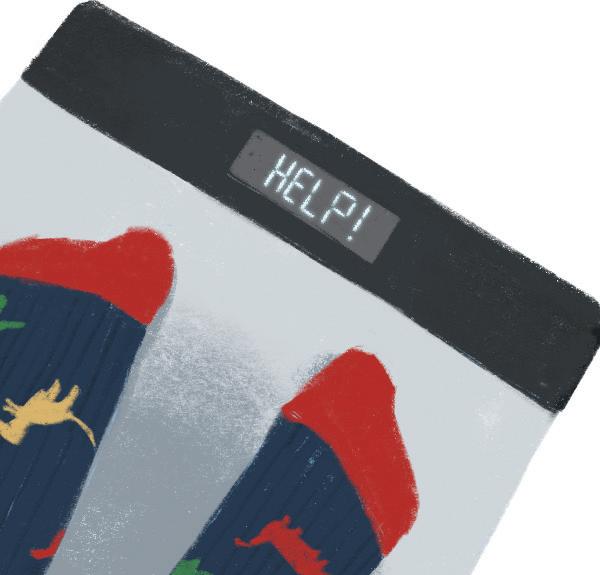
2 minute read
TIPPING THE SCALES
Pediatric Protocols Address Obesity
TWO OUT OF THREE adults in the United States are overweight or obese, according to the Harvard T.H. Chan School of Public Health. New data shows that the U.S. obesity epidemic is only getting worse — and not just for adults.
According to the Centers for Disease Control and Prevention, obesity was preva cents from 2017 to 2020, prompting the American Academy of Pediatrics to release new guidelines for pediatricians that aim to
The guidelines, which were released on Jan. 9, are the first changes to the AAP’s guidelines in over 15 years. They include recommendations for doctors to prescribe weight loss medications and bariatric surgeries — a type of surgery that involves shrinking the stomach in order to reduce the amount of food that can be eaten — to children with a body mass index at or above the 85th percentile and over the age of 12.
While surgery and medication may seem like extreme measures, the changes aren’t radical according to Thomas Robinson, Professor of Pediatrics and Medicine at Stanford University and the Director of the Center for Healthy Weight.
“They [AAP] have moved towards being a little more aggressive in the behavioral treatment,” Robinson said. “They’ve eliminated this period, what used to be called ‘Step One,’ of saying, ‘Let’s just watch and
Source: Let’s Get Healthy California, 2017 wait and see what happens and give a little bit of education about nutrition and the importance of healthy activity.’”
Robinson said that there has been pushback to the guideline changes from movements such as Health at Every Size, who promote the idea that weight shouldn’t be a focus of medical treatment.
“I have a tremendous amount of empathy for them and understand how difficult it is, especially in this world when we don’t have a lot of good answers,” Robinson said. “There’s so much discrimination and stigmatization of people based upon their weight that it makes their lives very, very, very difficult.”
According to Robinson, part of the problem is the way obese people are treated.
“Society sees it [obesity] as an individual failing,” Robinson said. “Even people with obesity often blame themselves instead of blaming society.”

Although Robinson said that he thinks the guideline changes will be effective, he also said that they are only the first step towards solving the national issue of obesity.
“That’s why get sodas removed from schools and we’re trying to get better school meals and we’re trying to get front of package labeling.”
These proposed changes aim to limit various societal factors which Robinson said make it easy for people to become obese.
“Our culture provides lots of high calorie, highly palatable, cheap ever-present food,” Robinson said. “We market the heck out of it and get you to eat more and more.”
While food plays a large role in creating this issue, according to Robinson, other less obvious industries are also at fault. The technology and entertainment industries, he said, promote sedentary behavior and engineer opportunities for physical activity out of people’s daily lives. An institution closer to the Palo Alto High School community, however, is the cafeteria, which some students feel does not provide enough nu-
Paly sophomore Hanu Thakur said that the school meals don’t give him enough energy for his daily routine, which includes playing soccer.
“I don’t think they [school lunches] are very nutritious,” Thakur said.
“Obviously it’s got vegetables and meat and carbs, but it’s super packaged and it’s really unhealthy when you take a look at how it’s actually being produced, and I think that outweighs the actual nutritional value of the meal.”
Thakur said that the nutritional value of school meals should be improved by including healthier options.
“I think it should definitely be more fresh produce instead of everything packaged,” Thakur said. “It’s pretty bad for you, especially in the long run.”
While improving school meals and the AAP’s guideline changes are a few steps towards mitigating child obesity, there is plenty more to be done.
“My hope is that it [the guideline changes] will spur more of an effort to make these types of treatments [weight loss treatments] available,” Robinson said. “I think they will make a difference, but it’s one important part that the guidelines were











